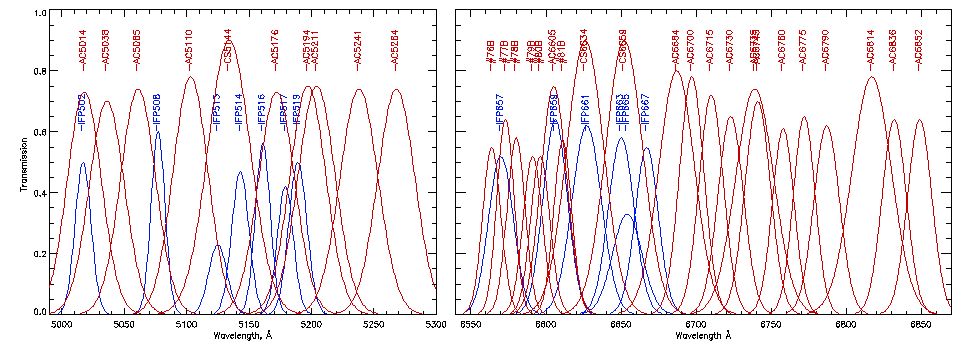http://www.eurastro.de/webpages/MRSPECT.HTM wrote:
The Solar Eclipse 1999 From Hungary
EurAstro Team Szeged I (Manfred Rudolf, Alfred Jakoblich, Franz Michlmayer, Carmen Ortega)
The spectra have been recorded with a 2" spectroscopic grating (200 grooves/mm) which was mounted in front of a 500 mm telephoto lens.
Some prominent emission lines are:
Hydrogen:
. Ha (657nm), H b (486 nm), Hg (434 nm), Hd (410 nm)
He I: 668, 588, 502, 492, 447 nm
Ba II: 650, 614, 493, 455 nm
Na I: 589 nm
Mg I: 553, 516-518 nm ("triplet")
Sr II: 422, 408 nm
Ca I: 586, 423 nm
Ca II: 397,393 nm
Fe I: many lines between 520-570 and 413-430 nm
Spectrum of the chromosphere:
The bright lines in red and turquoise, and two of the blue lines correspond to hydrogen, whereas the yellow line is indicative of helium. Helium was first discovered in 1868 by its yellow emission line in the flash spectrum recorded during a solar eclipse. The wavelength of the emission lines is indicative of the composition (chemical elements) while the intensity of the lines reflects the abundance of the elements (ca. 70% hydrogen, 28% helium, the rest heavier elements). See the emission lines of: Hydrogen (656, 486, 434, 410 nm; indicated by white lines), Helium (587 nm (white line), 502, 447 nm), Sodium (589 nm, close to the yellow helium line), Magnesium (516, 517, 518 nm), Calcium (397, 393 nm). Many of the green lines are due to the presence of iron.
Coronal spectrum
In the spectrum you can distinguish a red, yellow, a faint green, turquoise, and several blue circles. Each of them represents an image of the solar corona in a different wavelength. The red, turquoise, and some of the blue images again are due to the hydrogen emissions, and the yellow image corresponds to helium. The bright dots on the circumference of the solar images represent the prominences. The green emission at a wavelength of 530 nm was first discovered at an eclipse in 1869. An emission line at that wavelength was unknown in laboratory spectra, and a new element was suspected, named "coronium". Later it turned out that this green emission was due to iron atoms from which 13 electrons have been stripped off (FeXIV), and which can only be found under the extreme conditions of the corona at temperatures of 2,000,000 Kelvin or higher. This also makes clear why there are no green "dots" (images of prominences) on the circumference of the green solar image. The temperature of the prominences is about 4000-6000 K only and thus far too low to allow the formation of the highly ionized FeXIV.>>
 The Flash Spectrum of the Sun
The Flash Spectrum of the Sun


